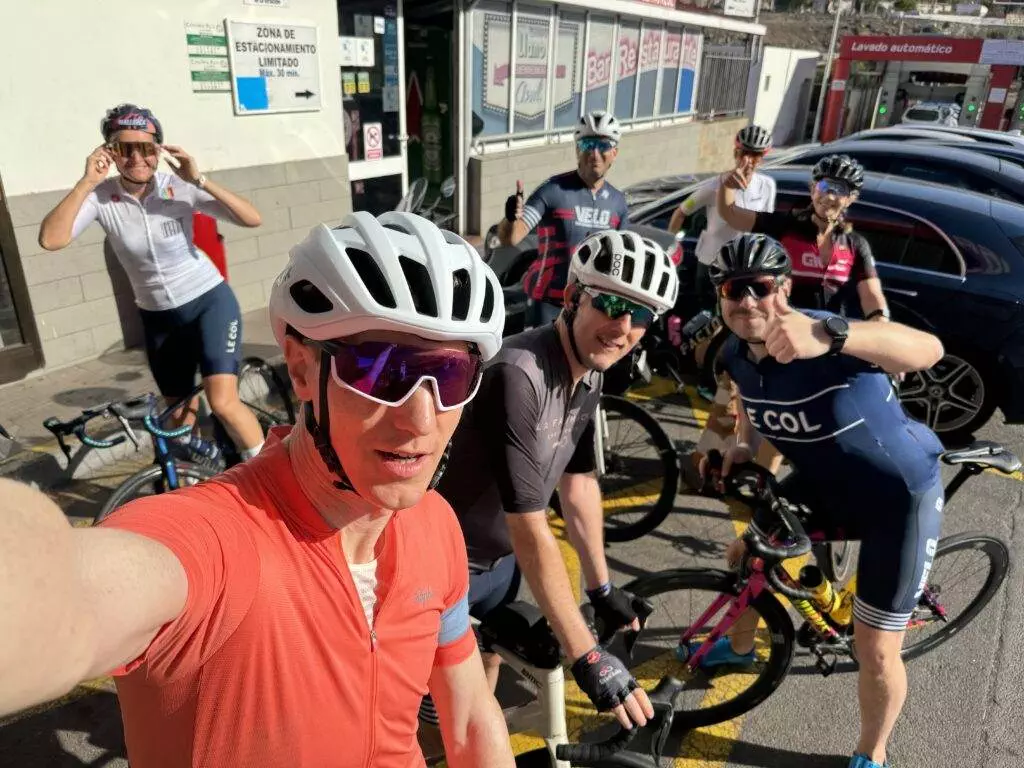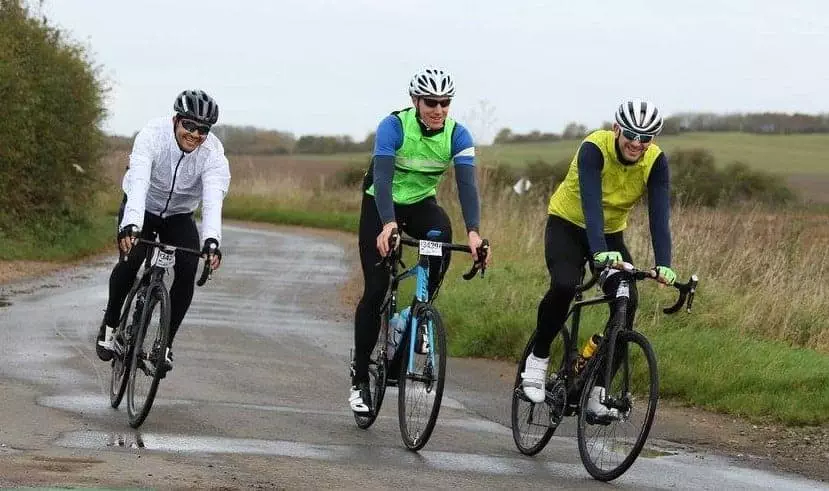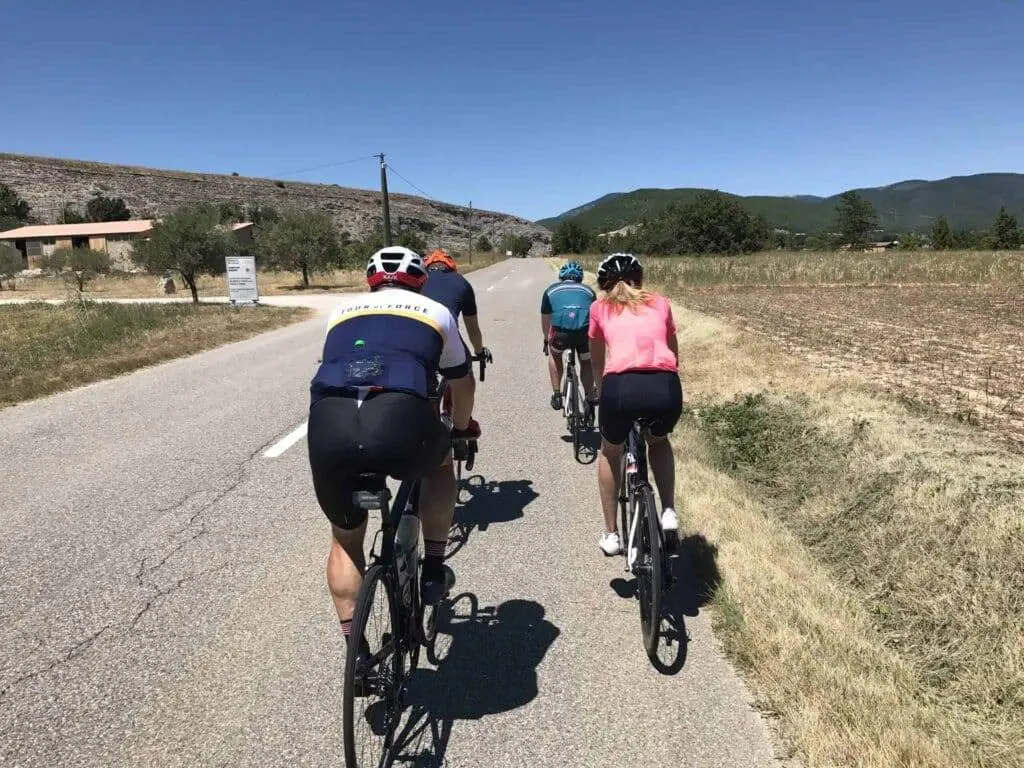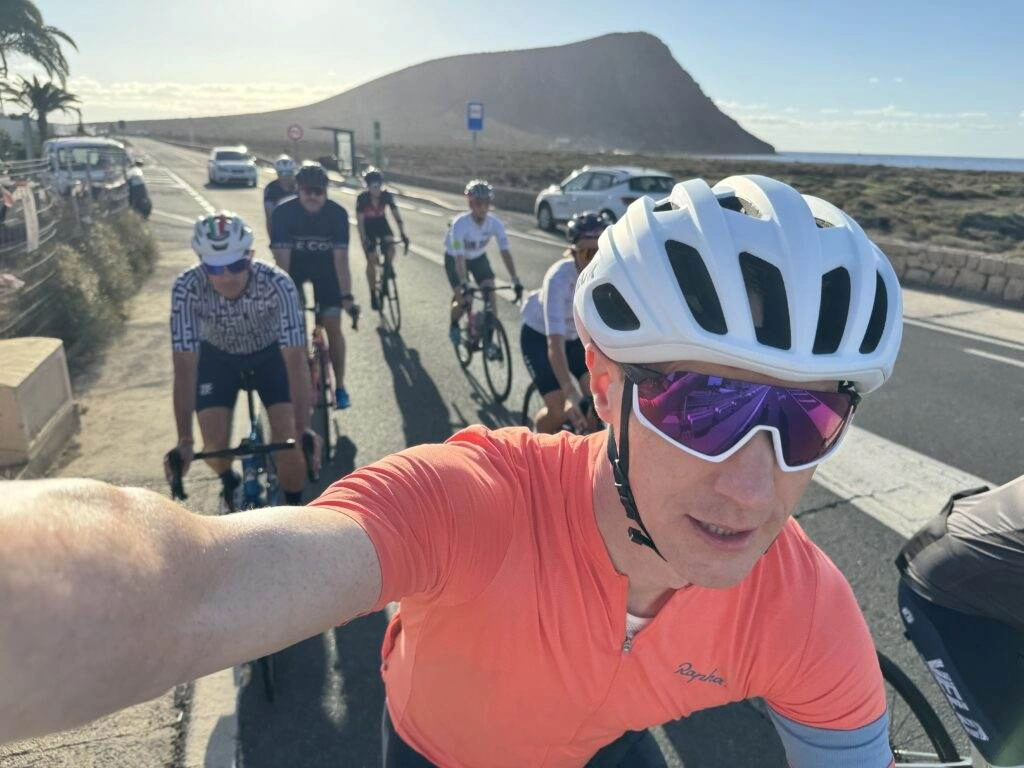Cycling is more than just a solo activity; it’s a group experience that brings together people from all walks of life.
Group cycling isn’t just about hitting the road together.
It’s about building camaraderie, improving your skills, and having an unforgettable time on two wheels.
In this blog, we’ll dive into essential tips for group riding etiquette, safety, and techniques to ensure every ride is smooth and enjoyable.
Get ready to pedal with confidence and connect with fellow cycling enthusiasts as we explore the world of group cycling!

The Essence of Group Riding
Group riding is all about working together. It’s not just about pedaling; it’s about keeping a steady pace, communicating well, and looking out for each other. The goal is to ride smoothly as a group, whether you’re on a long ride, training, or just enjoying a day out with friends.
Benefits of Riding in a Group
Energy Conservation
One of the best things about group cycling is saving energy. When you ride close behind another cyclist, you face less wind resistance. This technique, called drafting, helps you conserve energy and ride longer distances with less effort.
Increased Speed
Riding in a group lets you go faster with less effort. When everyone takes turns leading, the group can maintain a higher speed than any single rider could alone. This is great for races or training.
Social Interaction
Group cycling is a social activity. It’s a chance to meet new people, share experiences, and make friends. The social aspect makes cycling more enjoyable and motivating.

Enhanced Performance
Regular group rides can improve your fitness and cycling skills. The friendly competition pushes you to do your best, leading to better overall performance.
Basic Group Riding Techniques
Maintaining Safe Distance
When riding two-abreast, keep a safe distance from the road edge and other riders. A gap of at least 0.5 meters ensures safety and allows for quick adjustments if needed.
Adapting to Road Conditions
Be ready to change your formation based on road conditions. On narrow roads or in heavy traffic, switch to a single file to stay safe. Communication is key, so signal your intentions clearly to the group.

Effective Communication
Hand Signals
Use clear hand signals to communicate with fellow riders. These signals indicate turns, stops, and obstacles, keeping everyone safe and in sync.
Verbal Cues
In addition to hand signals, use verbal cues to alert riders to immediate dangers or changes in pace. Shout warnings like “slowing” or “stopping” to prevent sudden braking and potential collisions.
Understanding Pace Lines
Single Paceline
A single paceline involves riders forming a single file, taking turns at the front to break the wind. This formation is ideal for narrow roads and high-speed riding.
Double Paceline
In a double paceline, riders form two parallel lines, taking turns at the front in pairs. This formation is suitable for wider roads and allows for more social interaction.
Safety and Confidence in Group Riding
Avoiding Sudden Movements
Maintain a steady pace and avoid sudden movements to keep the group safe. Unpredictable actions can lead to accidents and disrupt the flow of the group.
Monitoring Surroundings
Stay aware of your surroundings, including other riders, traffic, and road conditions. This awareness helps you make informed decisions and avoid potential hazards.
Traffic and Road Conditions
Understand and adapt to traffic and road conditions. Be mindful of vehicles, pedestrians, and road obstacles. Follow the rules of the road and be considerate of other road users.

Advanced Group Riding Strategies
Pacelines and Drafting
Drafting behind another rider reduces wind resistance, allowing you to conserve energy. This technique is especially useful during long rides and competitive events.
Maintaining Consistent Distance
Keep a consistent distance from the rider in front for effective drafting. Too close, and there’s a risk of collision; too far, and the aerodynamic advantage is lost.
Smooth Rotation Techniques
Smooth transitions in a double paceline involve pairs of riders taking turns at the front before rotating back. This technique ensures the group’s momentum is maintained.
Effective rotation techniques help maintain the group’s momentum, allowing for a steady pace and efficient energy use.
Climbing and Descending in a Group
On hills, the group may adopt a tighter formation to stay together. Communicate and adjust your pace to ensure everyone stays with the group.
Proper gear changes and consistent pedal pressure are essential when climbing or descending in a group. This helps maintain a steady pace and avoid disruptions.

Overcoming Common Challenges
Keeping the Group Together
Pace climbs for the middle of the group to ensure everyone stays together. The front riders should set a pace that accommodates the entire group.
Avoiding Disruptive Behavior
Effective communication is key to avoiding disruptive behavior. Clear signals and verbal cues help maintain group harmony and safety.
Be mindful of other riders and their needs. Avoid unnecessary surges and respect the group’s pace to create a cohesive group riding experience.
Conclusion
Mastering group cycling involves understanding basic techniques, ensuring safety, and adopting advanced strategies. Effective communication, situational awareness, and mutual respect are the cornerstones of successful group riding.
Regular practice and a commitment to improvement will enhance your group riding skills. Embrace the challenges, enjoy the camaraderie, and strive for excellence in every ride.
FAQs
What is the best formation for group cycling?
The best formation for group cycling depends on the road conditions and the size of the group. A double paceline is ideal for wide, open roads, while a single paceline is better for narrow roads and high-speed riding.
How can I improve my drafting skills?
Improving your drafting skills requires practice and good bike handling. Start by riding closely behind another rider, maintaining a consistent distance, and gradually increase your comfort level.
What should I do if I need to stop suddenly in a group ride?
If you need to stop suddenly in a group ride, signal your intentions clearly to the riders behind you. Use a hand signal to indicate a stop and shout a verbal warning, such as “stopping” or “slowing.”
How can I stay safe when riding in traffic?
Stay safe when riding in traffic by being aware of your surroundings, following the rules of the road, and communicating clearly with other road users.
What are some common mistakes to avoid in group cycling?
Common mistakes to avoid in group cycling include sudden movements, poor communication, and not maintaining a consistent pace. Be predictable and consistent in your actions, use clear signals and verbal cues, and work together with your fellow riders.
How can I build confidence in group riding?
Build confidence in group riding by joining smaller group rides and gradually increasing the size and complexity of the rides as you become more comfortable. Focus on developing your bike handling skills, communication, and situational awareness.
